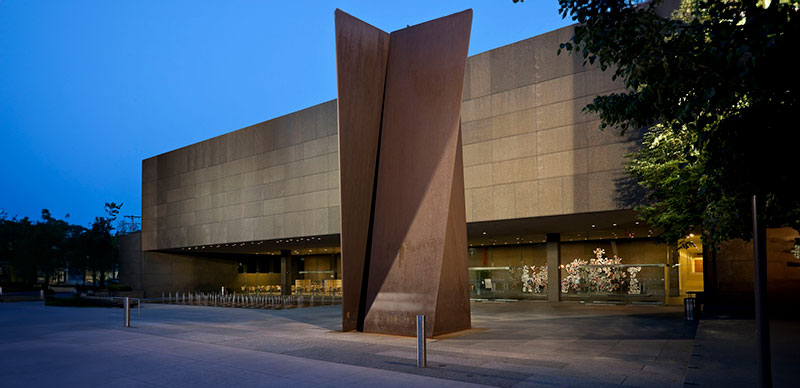by Lynn Parrucci
Often called the “stinking rose,” garlic is among the most ancient of
cultivated plants, and its pungent odor has given it a legendary reputation.
Through the annals of culinary history and folklore, garlic (Allium sativum)
has been credited not only as an aphrodisiac, but also as a tonic to embolden
soldiers and to ward off vampires, worms, tumors and the common cold.
Garlic lovers would certainly agree that store-bought garlic powder
or garlic salt provide a superficial, monotonous culinary experience compared
with the bountiful flavors inherent in a clove of fresh garlic. Knowing
the plant’s scientific secret allows cooks to creatively manipulate elegant
nuances of flavor, bringing a rich diversity to their cooking.
Many plants, including garlic, protect themselves from bacteria, insects
and animals by producing odoriferous compounds. But whole garlic cloves
are relatively odorless. The key to garlic’s aromatic magic lies within
the plant’s cell walls, and once these cell membranes are ruptured, the
power is unleashed. The process is like assembling a puzzle. Inside each
garlic cell lies one piece of the puzzle, an odorless molecule call alliin.
Outside the cell, between the individual cell walls, lies the other puzzle
piece, an enzyme called alliinase. Enzymes are specialized proteins shaped
in such a way that they lock with other molecules in a fixed position.
Once a molecule is held by an enzyme, it is more likely to undergo specific
chemical reactions
As garlic is chopped into fine pieces, more and more cell walls are
broken, allowing more alliin molecules to meet alliinase. When these puzzle
pieces lock together, a complex series of reactions is triggered. The alliin
molecule is broken into several new molecules with different properties,
but the alliinase molecules catalyze many reactions without undergoing
any changes themselves. One of the molecules produced by the enzymatic
reactions is the primary source of garlic’s odor.
Chopped raw, garlic has a pungent taste and odor. But when whole cloves
are simmered or roasted, the heat transforms the alliin into new, larger
molecules before they meet the alliinase. This new structure gives the
garlic a soft, sweet buttery flavor that surprises many first-time eaters.
Somewhere between finely chopped and whole there exists a wealth of opportunities
to vary garlic’s flavor-from slicing, smashing and quartering to fusing
with oil.
While garlic is thought to have been first discovered in Siberia, its
culture is widely spread and is popularly used in Indian, Asian, Middle
Eastern, Mediterranean, European and American cuisine.
Below are adaptations of two pasta recipes in which fused garlic is
used as a base for a delicate anchovy paste. Herbs and spices are added
to the paste to give the sauce a distinct flavor. The original recipes
from the Umbria and Calabria-Lucania regions of Italy can be found in a
cookbook by Ada Boni entitled Italian Regional Cooking. The Umbria variation
produces a fresh mint flavor enhanced by capers. The Calabria-Lucania version
is boldly influenced by spicy chili powder and bread crumbs. Either of
these sauces can be complemented by hearty vegetables such as asparagus,
portabella mushrooms or sun dried tomatoes.
To learn more about garlic, visit the Carnegie Science Center’s Kitchen
Theater. For information about garlic festivals, recipes and planting,
visit the Garlic Page website at http:www.garlicpage.com, or search for
“stinking rose” on any search engine.
Lynn Parrucci is program coordinator at the Science Center’s Kitchen
Theater. Botanist Sue Thompson also contributed to this article.
PASTA WITH ANCHOVY SAUCE
1 cup extra virgin olive oil
2 cloves of chopped garlic
1 2-oz. can of flat anchovy fillets, drained and rinsed
Cracked pepper to taste
1 1/2 lbs. pasta
large pot of water
large saute pan
Bring large pot of water to boil and add pasta. Cover, bring water back
to boil, stirring occasionally with large fork. Cook briskly until tender
but firm.
Meanwhile, heat oil in saute pan. Add garlic and saute until golden
brown, then remove from oil. Add anchovies and cover immediately to avoid
spattering hot oil. Wait a few seconds until spattering stops. Remove lid
and stir until anchovies dissolve into paste. Add cracked pepper to taste.
Remove pan from heat. Drain pasta and pour onto heated dish. Add anchovy
paste and toss with either of the variations below.
VARIATION 1 – UMBRIAN MINT PESTO
1/2 cup mint finely chopped
1/2 cup parsley finely chopped
2 Tablespoons capers, drained, rinsed and patted with towel
12 black olives, pitted and chopped
VARIATION 2 – CALABRIAN SPICY CHILI
3 cups coarsely grated fresh bread crumbs
1/4 cup olive oil
chili powder to taste
Saute bread crumbs in oil until golden. Sprinkle with plenty of chili
and keep hot.
Neither variation is served with cheese. The salted flavor will come
from the recipe’s other ingredients.
* * *
Visit the Kitchen Theater at Carnegie Science Center to learn more
about the science of cooking, and get a taste of what we’re cooking and
a recipe to take home. For a schedule of daily cooking shows, check the
schedule board in the Science Center lobby on the day of your visit, or
call 237-3400. Be sure to ask if there is a guest chef appearing. The Kitchen
Theater at Carnegie Science Center is sponsored by the Jewish Healthcare
Foundation.



